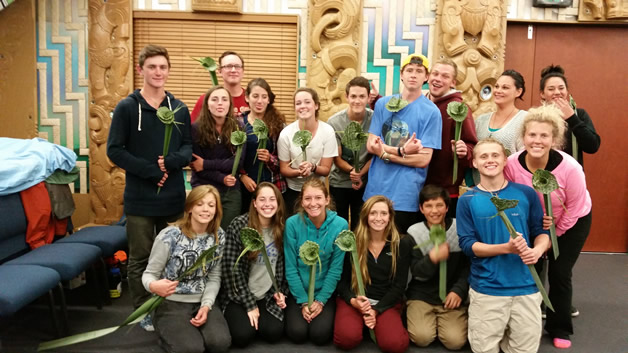Rāpaki saw the return of a group of American youth from Carpe Diem Education, on a working environment project within the South Pacific. They had been coming to Rāpaki for six years before the earthquake and attended the poroporoaki of Te Wheke. This was their first visit since the earthquake. The following is a snippet they published on their blog about their seven days at Rāpaki:
“The opening ceremony was fun, interesting and made all of us a bit anxious. The important thing was, we were accepted.
Throughout the rest of the week, we got down and dirty (with the wildlife that is). We pushed through hikes, weeding and land work. Motivated by the spectacular views, the hikes were hard but we pulled through. Cleaning up the marae grounds was a blast simply due to the presence of Robert, who talked us through the hot and sunny work. We also planted within the stream and it was a gift to see Yvette’s eyes light up during that.
Overall, the stay was an awesome experience. From the beauty inside the marae to the intriguing stories, from the wonderful food to the warm and loving hosts and the vivid moments of teamwork. Entertainment, hard work and respect for one’s culture really did pay off. We will never forget that beautiful and lush time we had with the Ngāi Tahu people.”
A big thank you to Craig Pauling, who shared his collection of taonga and Manaia Cunningham, who told the Settlement stories of Ngāi Tahu on the Horomaka; and Ngāi Tahu working within Government organisations such as Environment Canterbury. Thank you also to Cain and Toni Tauwhare for sharing their special skills of whakairo and raranga and finally John Lewis, for his work on the stream and leading the intrepid journey up the gully behind Rāpaki across the crater rim, out onto Te Poho o Tamatea and back into Rāpaki.

The Carpe Diem Education group holding their putiputi.